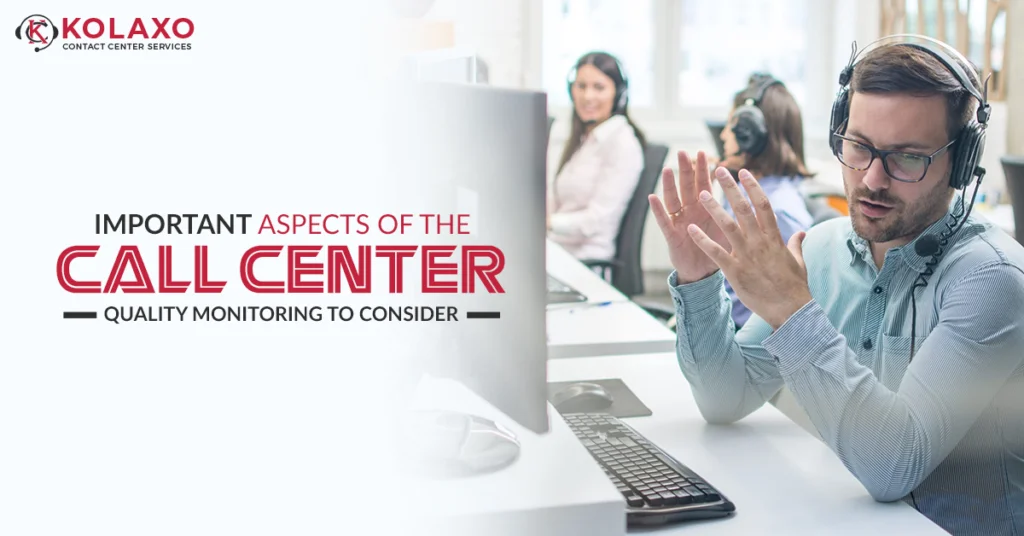The demand for quality assurance continues to grow, as does the need for quality monitoring, especially in the call center industry. Call centers have to ensure excellent communication quality with all of their clients. To do this, call center managers must create a Quality Monitoring Team and focus on improving their employees' communication effectiveness.
What is Call Center Quality Monitoring?
Call center quality monitoring is an integral part of the call center process. It's used to measure how well a call center is performing and is a great way to see how your team is doing.
It can be hard to tell if your call centers are doing well or if you need to improve how things are going. That's where call center quality monitoring comes in!
Call center quality monitoring allows you to check in on how your call centers are doing over time to ensure everything is running smoothly and efficiently. This will let you know if there are any issues with customer satisfaction or employee satisfaction that need addressing quickly before they get worse!
Why is Call Center Quality Monitoring Important?
Call center quality monitoring is essential for several reasons. First, it ensures that your customers get the service they paid for. Second, it helps you track your employees and ensure they're doing their jobs. Third, it allows you to identify customer service trends and improve them over time.
If you don't monitor quality, you may find that your customers are not satisfied with their interactions with your company or specific employees. This could lead to negative reviews on social media platforms, damaging your reputation and the business as a whole.
Additionally, if you don't have any oversight over what goes on in the call center—especially with regards to employee performance—you won't know when someone isn't doing their job correctly until they've already quit or been fired because they were let go due to poor performance issues that weren't addressed early on before things got out of hand!
Lastly, but most importantly, if you don't have any tracking system in place, how will anyone know how many calls came through today? How many people were waiting in line? How long those wait times were? And how long did each conversation last before someone hung up without saying goodbye?
Which Key Performance Indicators Should You Monitor?
There are many key performance indicators (KPIs) that you can use to monitor call center quality. These include:
Abandonment Rate: This is the percentage of calls abandoned by customers before they reach an agent. It's essential to monitor your abandonment rate because it shows how long people are waiting on hold and can help you identify bottlenecks or other issues that might slow down your response time.
Average Handle Time: This is the average amount of time it takes for an agent to respond to a customer after they've reached their support team. The lower your average handle time, the better!
First Call Resolution Rate: This is the percentage of calls where customers receive a resolution after their first contact with your company's support team. This number should be as high as possible to show customers that you're responsive and helpful!
How to interpret the data and use it appropriately to improve your organization's customer experience?
The Call Center Quality Monitoring data is a great way to understand the customer experience in your organization. With this data, you can see how many calls were answered by a live agent and how many times the caller was transferred to another person or department.
You can also see how often calls were abandoned, indicating that the caller felt they couldn't get through to an agent and needed to hang up.
This information will help you identify areas where your call center could improve its customer experience. For example, if most of your calls are being transferred to another department and not answered by a live agent, it's possible that there aren't enough agents on duty at any given time. This could be due to high call volume, seasonal staffing changes during tax season, or back-to-school shopping weeks.
If most of your calls are being abandoned before being answered by an agent, then it's possible that the caller isn't getting through because they're calling at peak times when more customers are calling in.
This may mean that there need to be more agents on duty during these times so that all customers can be served quickly without waiting too long for their call to be answered by someone who can help them resolve their issue.
Conclusion:
Call center quality monitoring is crucial to the Customer Experience Management process. It allows call centers to identify and resolve issues as they arise and helps companies keep track of their performance over time.
As such, monitoring key performance indicators (KPIs) to understand how well your call center performs is essential.
The best way to do this is using a Quality Monitoring System (QMS), which will help you track KPIs like average handle time, customer satisfaction, and more.
